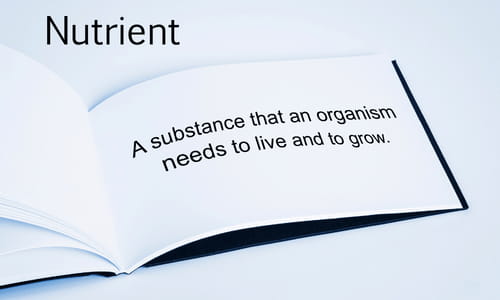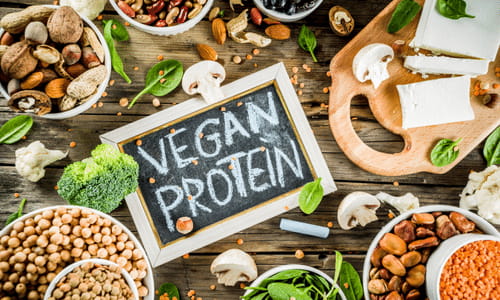High Protein Vegan Lunch Ideas
“High Protein Vegan Lunch Ideas” was written by Genevieve Bowman, RDCS & edited/reviewed by Aly Bouzek, MS, RDN.
Older adults experience many changes in their metabolism and appetite, putting them at risk for unintended weight loss and malnutrition.
Those older adults following a vegetarian or vegan diet are at particular risk for health complications due to possible missing or insufficient nutrients.
One way to overcome this nutrient imbalance is to incorporate a high protein vegan lunch into your diet. Having a healthy balance of plant-based proteins and other vitamins and minerals will help maintain blood sugar and metabolism levels.
Additionally, you will have the energy needed to get you through the day.
What is Plant-based Eating?
Plant-based (including vegan) nutrition focuses on foods from plants. There are many different types of plant-based diets. Some include certain meats and dairy products, while others do not.
Following a plant-based diet doesn’t have to mean all or nothing. There isn’t a right or wrong way. Also note that plant-based doesn’t necessarily mean healthy.
Types of Plant-based Diets
Knowing the foods included and excluded in specific plant-based diets can help you prepare meals that are both nutritious and delicious.
| Plant-based Diet | Foods Excluded | Foods Included (in addition to fruits, vegetables, grains, nuts & seeds) |
| Lacto-vegetarian diet | meat, fish, poultry, eggs | dairy |
| Ovo-vegetarian diet | meat, fish, poultry, dairy | eggs |
| Lacto-ovo vegetarian diet | meat, fish, poultry | dairy, eggs |
| Pescatarian diet | meat, poultry, eggs, dairy | fish |
| Vegan diet | meat, poultry, fish, eggs, dairy | |
| Flexitarian diet | plant-based foods mostlyanimal-based foods on occasion |
Why Plant-based Eating?
Plant-based diets have been shown to help reduce the risk of:
- cardiovascular disease
- high blood pressure
- certain cancers
- diabetes
- obesity
In addition, a balanced plant-based diet is rich in vitamins, minerals, antioxidants, and fiber that can help promote overall wellness.
Eating fruits and vegetables, whole grains, nuts, and legumes also provides nutrient-dense nutrition that can meet the nutritional needs of older adults who suffer from decreased appetites.
Is Plant-based Eating Safe for Older Adults?
At any age, eating less meat and high-fat dairy foods can lead to lower consumption of saturated fat and cholesterol, and higher consumption of healthy fruits, vegetables, and fiber.
A plant-based diet can be safe for older adults if it is not overly restrictive and includes healthy alternatives.
While a plant-based diet is a great choice for many older adults, there are some potential challenges and health risks. However, with careful planning and the guidance from a registered dietitian, even a vegan diet can be safe for older adults.
Special Concerns with Plant-based Diets for Older Adults
Some may find following a vegan or strict vegetarian diet a bit challenging and restrictive at first.
It may be more manageable to slowly incorporate more plant-based or high protein vegan lunch meals into your diet until you reach a level that you are comfortable with.
A second concern for those following plant-based diets is the risk of specific nutrient deficiencies. Eliminating animal-based food sources can make it difficult to meet all of your nutrient needs.
Nutrients of Concern

Nutrients to keep an eye on include:
- Protein: it is needed to maintain muscle mass and strength as well as to support body tissues.
- Vitamin B12: it is important for the prevention of anemia and to support metabolism and other body functions.
- Calcium and vitamin D: are needed for bone and tooth strength. This is particularly important for those at risk for osteoporosis.
- Omega-3 fatty acids: support heart health and reduce the risks of stroke
- Iron and zinc: are important for red blood cell formation, immune function, and wound healing.
- Iodine: supports healthy thyroid function and metabolism.
Why is Protein Important?
Proteins are made up of amino acids that function as the building blocks for the tissues in your body. Nine of these amino acids are not made by the body and must be obtained from the food you eat.
Animal-based proteins supply all nine essential amino acids, but most plant-based proteins do not. This can make it difficult to meet the protein needs to support a healthy body.
It is key to eat a varied plant-based diet to make sure you’re getting different amino acids throughout the day.
How to Prevent Nutrient Deficiencies
Preventing nutrient deficiencies can be as simple as eating a diet that includes a variety of nutritious foods. Here are a few additional tips:
- Include soy, quinoa, spinach, legumes, whole grains, nuts, and seeds for protein.
- Consider fortified foods such as cereals, bread, and juices, as well as a supplement for vitamin B12.
- Include dark green vegetables, leafy greens, and fortified foods for calcium and vitamin D.
- Include vegetable oils, walnuts, flaxseeds, and leafy vegetables for omega-3 fatty acids.
- Include dried beans, lentils, leafy greens, dried fruit, soy, nuts, whole grains, and fortified foods for iron and zinc.
- Include soy, sweet potatoes, broccoli, and cauliflower for iodine.
- Include high protein vegan lunches in your diet
Tips for Starting a Vegan Diet

Starting a vegan diet is not for everyone.
Make sure you are prepared by knowing what nutrients may be missing from your diet, and how to incorporate them back into your meals and snacks.
Some tips for starting a vegan diet include:
- Plant-based diets: it’s not all or nothing.
- Slowly and steadily increase the number of plant-based food sources in your regular meal rotation so that it becomes most of your nutrition.
- A good goal might be to make at least ½ of your plate plant-based and eat smaller amounts of meat.
- Try swapping 1-2 of your normal meals with plant-based options.
- Making big changes too fast may be overwhelming.
- Try starting with a high protein vegan lunch or high protein vegan breakfast.
High Protein Vegan Lunch Ideas
A high protein vegan lunch is a great way to begin incorporating more plant-based meals into your diet. They will supply you with healthy vitamins, minerals, fiber for regularity, and protein to give you energy.
You are sure to find a tasty high protein vegan lunch recipe to satisfy you. As such, here are a few high protein vegan lunch recipes:
High Protein Vegan Lunch #1: Quick and Easy Vegetable Chili

This Quick and Easy Vegetable Chili is full of fresh veggies, protein-packed beans, and plenty of spices to bring lots of flavor to your lunch!
Protein total per serving: 10 grams.
Ingredients:
- 2 Tbsp canola oil or peanut oil
- 1 medium onion, chopped
- 1-2 cups fresh vegetables, chopped (mushrooms, celery, zucchini, etc.)
- 1 ½ tsp chili powder (to taste)
- 1 tsp Worcestershire sauce
- ¼ tsp ground red pepper (to taste)
- 1 – 15 oz can kidney beans, no salt added, do not drain
- 1 – 8 oz can corn, no salt added, undrained
- 1 – 8 oz can tomato sauce, low sodium
- 1 cup tomato juice or vegetable juice, low sodium
Directions:
- Heat a large skillet on high.
- Add oil to skillet
- Stir onion & other fresh chopped vegetables in the skillet for about 5 minutes.
- Stir in chili powder, Worcestershire sauce, and ground red pepper.
- Continuing stirring for about 1 minute.
- Stir in canned goods: beans, corn, tomato sauce, and tomato/vegetable juice.
- Bring to a boil.
- Reduce heat and simmer uncovered for about 10 minutes or until slightly thick.
- Divide evenly into 4 bowls.
High Protein Vegan Lunch #2: High Protein Vegan Stir Fry
Next we have a High Protein Vegan Stir Fry that is sure to be a crowd pleaser. Using freezer and pantry ingredients, this recipe can be shopped for ahead of time and prepared when you’re ready!
Protein total per serving: around 20 grams depending on brands and quantities used in recipe.
Ingredients:
- 1 bag of lentil or chickpea rice
- 2 Tbsp sesame oil (or other preferred cooking oil)
- ½ large red onion
- 16 oz frozen veggies
- 1-2 cups shredded purple cabbage
- 1 large carrot, diced
- 1 cup frozen edamame, shelled
- 1 tsp powdered ginger
- 1 tsp garlic powder
- 2 Tbsp coconut aminos (or low sodium soy sauce)
- 1-2 Tbsp gochujang (also known as red chili paste)
Directions:
- Cook rice.
- While cooking rice, heat sesame oil in a separate skillet over medium heat.
- Add diced onions to the skillet and stir and cover for 1 minute.
- Add frozen veggies, edamame, cabbage, and carrots.
- Stir, cover, and cook an additional 3-5 minutes
- In a small bowl, whisk seasonings, coconut aminos, and gochujang.
- Add seasoning mixture and rice to the skillet.
- Stir well, serve, and enjoy.
High Protein Vegan Lunch #3: Quinoa and Veggie Soup
This Quinoa and Veggie Soup is high in protein, veggies, and flavor. Try batch cooking this recipe by making more than one batch at once and freezing leftovers for easy lunches throughout the week.
Protein total per recipe: 12+ grams.
Ingredients:
- 1 Tbsp olive oil
- ½ medium sweet onion, roughly chopped
- 2 cloves garlic, minced
- 1 cup carrots, diced
- ½ cup celery, sliced
- 1 red bell pepper, seeded and chopped
- 1 cup frozen green peas
- 1 cup frozen corn
- 32 oz low sodium veggie broth
- ½ cup quinoa
- ½ Tbsp basil
- ½ tsp cumin
- ¼ tsp cayenne pepper
Directions:
- Heat olive oil in a large pot on medium high heat. Sauté onion until just translucent.
- Add garlic and stir for 15 seconds.
- Add carrots, celery, and red bell pepper and stir occasionally for 5-10 minutes.
- Stir in frozen peas, frozen corn, veggie broth, quinoa, and seasonings.
- When the pot reaches a boil, reduce heat to medium low, cover, and simmer for 15-20 minutes or until quinoa is cooked and veggies are soft.
High Protein Vegan Lunch Conclusion
High protein vegan lunches can be an easy and fun way to add more plant-based meals to your diet. Using different vegan protein sources will help you meet your nutritional needs and keep your diet varied and interesting.
